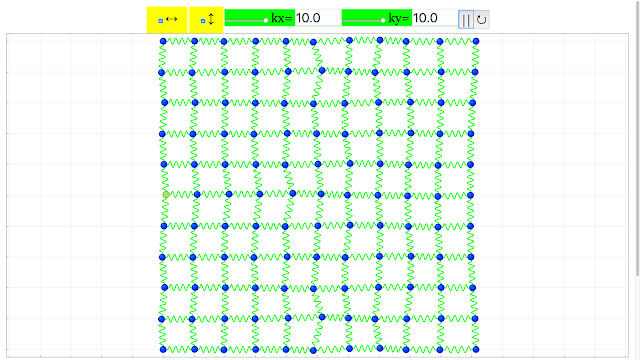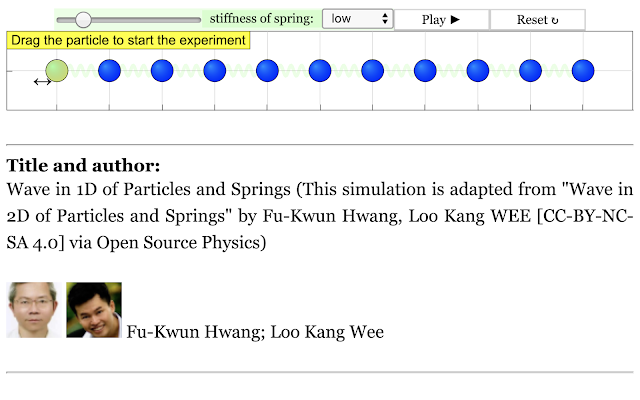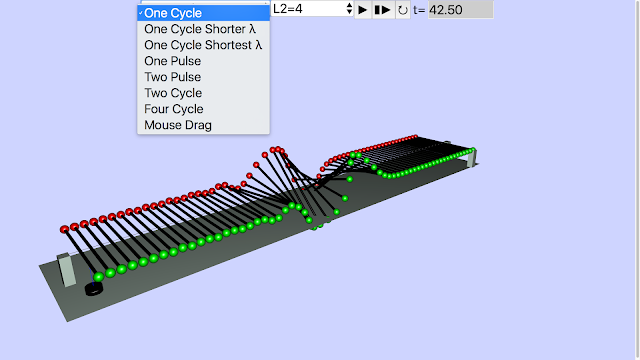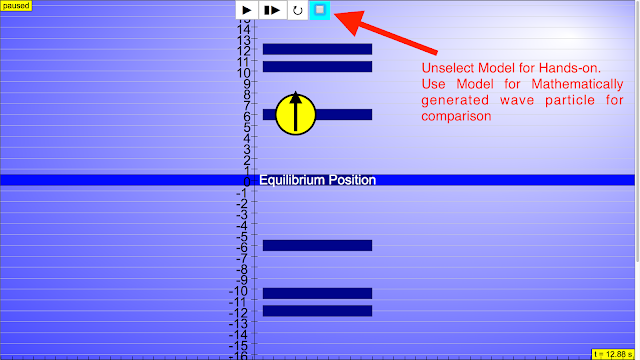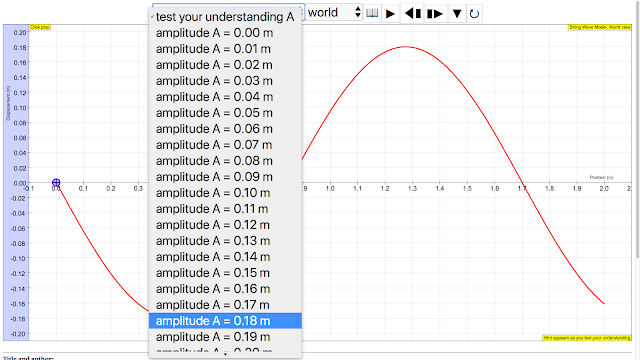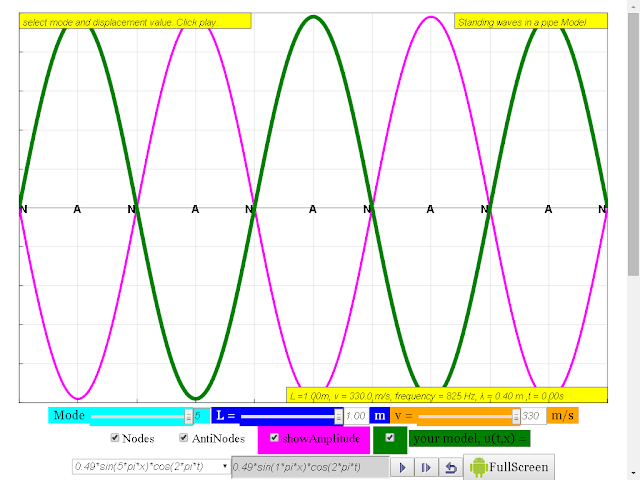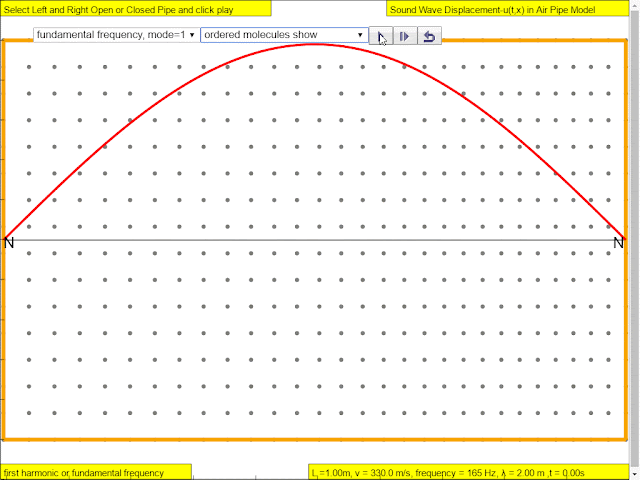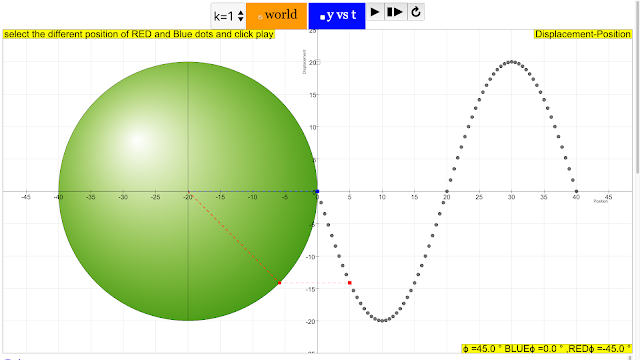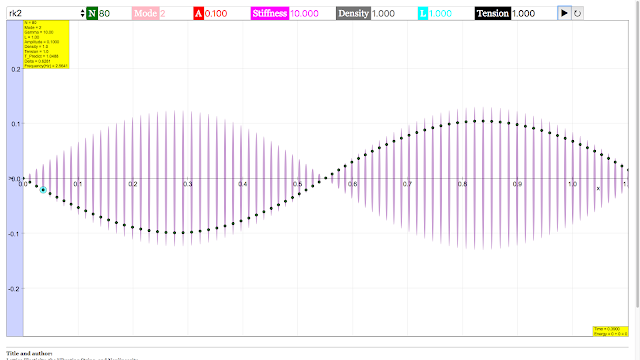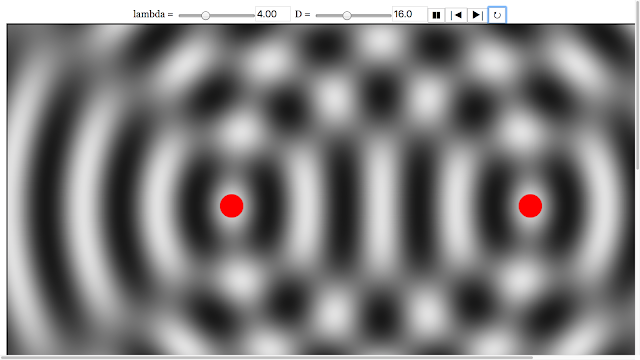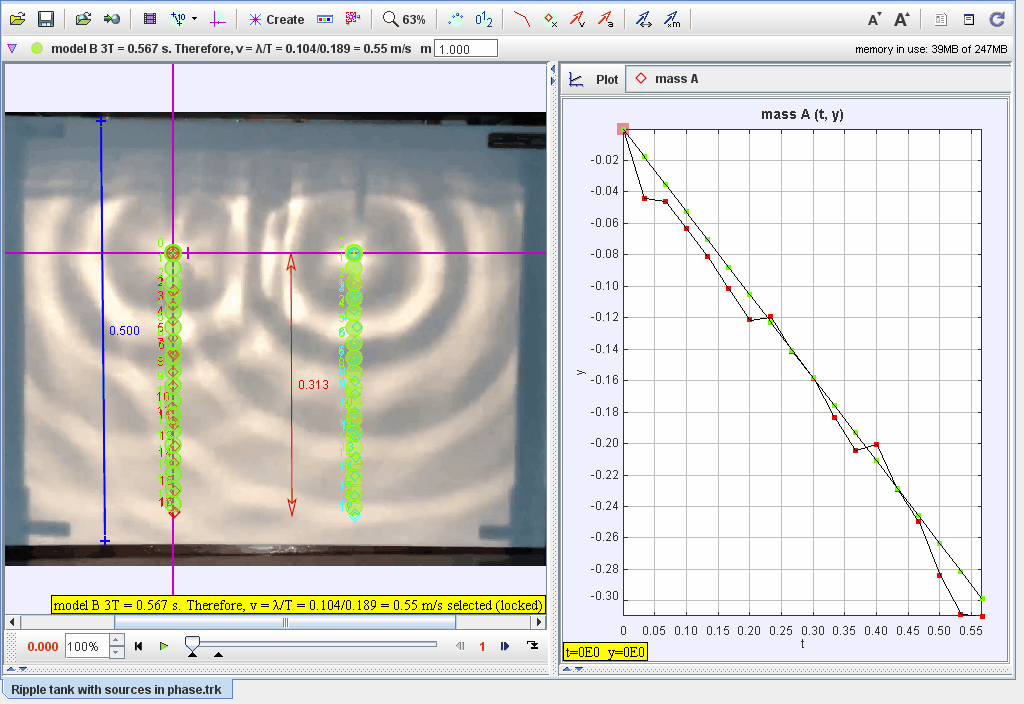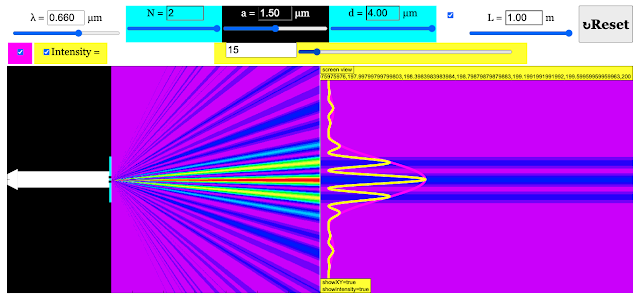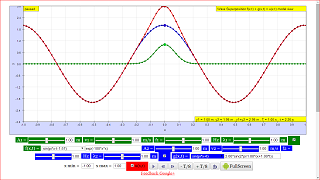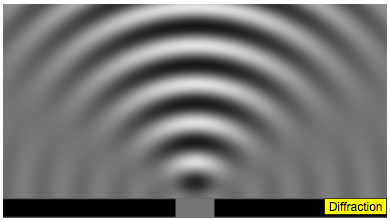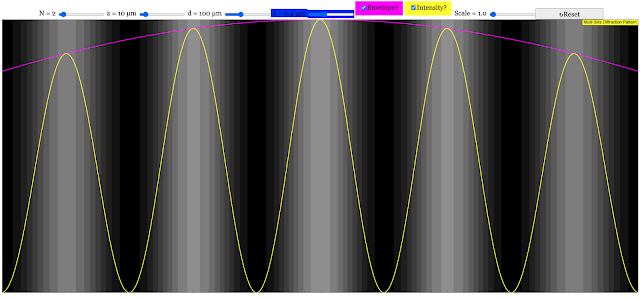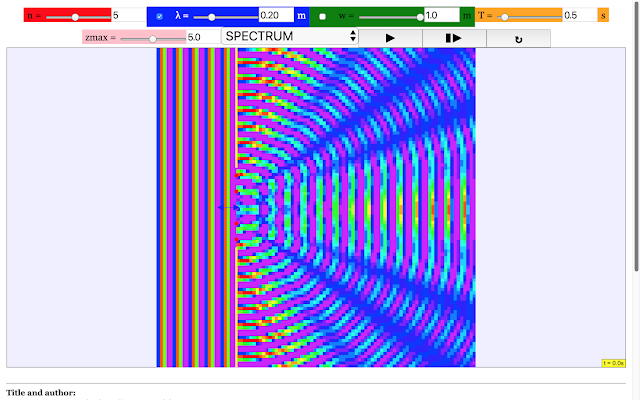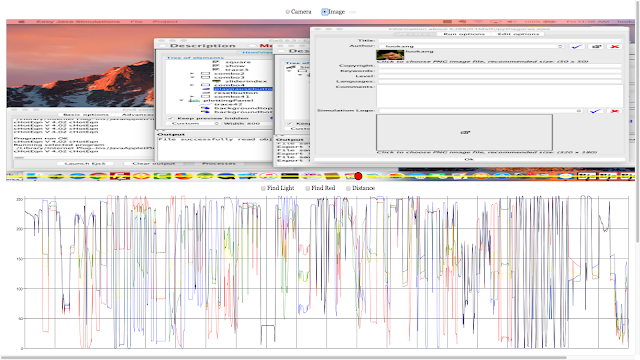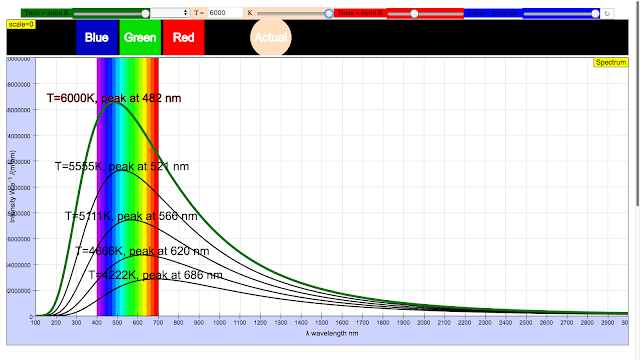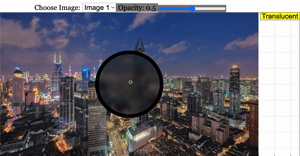Breadcrumbs
03 Waves
Waves. In H2 Physics, the collective behaviour of synchronised oscillators is modelled as waves. These ripples in space and time can transfer energy without transferring matter. To describe and represent wave motion, learners first need to pick up the necessary mathematical language and terminology, focusing initially on visualising waves in one spatial and one temporal dimension. Using the principle of linear superposition, a wide range of phenomena involving wave interference can be explained, predicting complex patterns with the aid of geometric reasoning.
Big Ideas. Waves are disturbances that propagate from one region of space to another. Waves are inherent in our everyday lives; how we hear, see and communicate is due to the way waves travel and transfer energy from a source (or disturbance) to places around it. 2. Sound waves are vibrations that propagate through a material medium. The speed of sound depends on the medium through which it travels; sound travels fastest through a solid, and slowest through a gas. 3. Light belongs to a family of waves known as Electromagnetic waves. Electromagnetic waves can propagate even in empty space where there is no material medium. Light and all other electromagnetic waves travel at the same speed (3.0 x 108 m/s) through a vacuum. Electromagnetic waves have many important applications in communication, home appliances, medical and industrial use. 4. When two waves overlap, their total displacement is the sum of the individual displacements of the individual waves. This is the principle of superposition of waves which is applied to explain the formation of stationary waves and interference patterns.
- Details
- Written by Fremont
- Parent Category: 03 Waves
- Category: 01 General Waves
- Hits: 3941
Read more: Moving Impulse JavaScript Simulation Applet HTML5
- Details
- Written by Fremont
- Parent Category: 03 Waves
- Category: 01 General Waves
- Hits: 5445
Read more: Wave Space Time Simulator JavaScript Simulation Applet HTML5
- Details
- Written by Fremont
- Parent Category: 03 Waves
- Category: 01 General Waves
- Hits: 4339
Read more: Reflection From Wall Simulator JavaScript Simulation Applet HTML5
- Details
- Written by Loo Kang Wee
- Parent Category: 03 Waves
- Category: 01 General Waves
- Hits: 6227
Read more: Wave in 2D of Particles and Springs JavaScript Simulation Applet HTML5
- Details
- Written by Loo Kang Wee
- Parent Category: 03 Waves
- Category: 01 General Waves
- Hits: 3140
Read more: SLS Wave in 1D of Particles and Springs JavaScript Simulation Applet HTML5
- Details
- Written by Fremont
- Parent Category: 03 Waves
- Category: 01 General Waves
- Hits: 11426
- Details
- Written by Fremont
- Parent Category: 03 Waves
- Category: 01 General Waves
- Hits: 7572
- Details
- Written by Loo Kang Wee
- Parent Category: 03 Waves
- Category: 01 General Waves
- Hits: 14821
Read more: Wave Representations JavaScript HTML5 Applet Simulation Model
- Details
- Written by Loo Kang Wee
- Parent Category: 03 Waves
- Category: 01 General Waves
- Hits: 9715
Read more: Standing waves in a fixed end String JavaScript HTML5 Applet Simulation Model
- Details
- Written by Loo Kang Wee
- Parent Category: 03 Waves
- Category: 01 General Waves
- Hits: 11917
Read more: Standing & Longitudinal waves in a pipe JavaScript HTML5 Applet Simulation Model
- Details
- Written by Loo Kang Wee
- Parent Category: 03 Waves
- Category: 01 General Waves
- Hits: 14646
Read more: Transverse Phase difference wave JavaScript HTML5 Applet Simulation Model
- Details
- Written by Loo Kang Wee
- Parent Category: 03 Waves
- Category: 01 General Waves
- Hits: 3989
Read more: PICUP Standing waves in a fixed end String JavaScript HTML5 Applet Simulation Model
- Details
- Written by Loo Kang Wee
- Parent Category: 03 Waves
- Category: 01 General Waves
- Hits: 3921
Read more: SLS Standing & Longitudinal waves in a pipe JavaScript HTML5 Applet Simulation Model
- Details
- Written by Fremont
- Parent Category: 03 Waves
- Category: 02 Superposition
- Hits: 4525
- Details
- Written by Fremont
- Parent Category: 03 Waves
- Category: 02 Superposition
- Hits: 4388
Read more: Student Learning Space Two Source Ripple Tank JavaScript HTML5 Applet Simulation Model
- Details
- Written by Loo Kang Wee
- Parent Category: 03 Waves
- Category: 02 Superposition
- Hits: 17662
- Details
- Parent Category: 03 Waves
- Category: 02 Superposition
- Hits: 4684
- Details
- Parent Category: 03 Waves
- Category: 02 Superposition
- Hits: 6624
Read more: Constant Velocity Water Wave 2 Source in Phase Model
- Details
- Written by Loo Kang Wee
- Parent Category: 03 Waves
- Category: 02 Superposition
- Hits: 7025
Read more: Interference in Time and Beats Model Physlets Illustration 18.3
- Details
- Written by Loo Kang Wee
- Parent Category: 03 Waves
- Category: 02 Superposition
- Hits: 6551
Read more: Double Slit Diffraction Model HTML5 Applet Javascript
- Details
- Written by Loo Kang Wee
- Parent Category: 03 Waves
- Category: 02 Superposition
- Hits: 8400
- Details
- Written by Loo Kang Wee
- Parent Category: 03 Waves
- Category: 02 Superposition
- Hits: 5010
- Details
- Written by Loo Kang Wee
- Parent Category: 03 Waves
- Category: 02 Superposition
- Hits: 27674
Read more: Wave Superposition JavaScript HTML5 Applet Simulation Model
- Details
- Written by Loo Kang Wee
- Parent Category: 03 Waves
- Category: 02 Superposition
- Hits: 3610
- Details
- Written by Loo Kang Wee
- Parent Category: 03 Waves
- Category: 02 Superposition
- Hits: 2988
Read more: Multiple Slit Diffraction JavaScript HTML5 Applet Simulation Model
- Details
- Written by Loo Kang Wee
- Parent Category: 03 Waves
- Category: 02 Superposition
- Hits: 7459
Read more: Single Slit Diffraction JavaScript HTML5 Applet Simulation Model
- Details
- Written by Fremont
- Parent Category: 03 Waves
- Category: 03 Electromagnetic Spectrum
- Hits: 18180
Read more: Light Analyzer Data Logger JavaScript Simulation Applet HTML5
- Details
- Written by Fremont
- Parent Category: 03 Waves
- Category: 03 Electromagnetic Spectrum
- Hits: 14220
Read more: Black-body radiation JavaScript HTML5 Applet Simulation Model
Subcategories
01 General Waves Article Count: 13
02 Superposition Article Count: 13
03 Electromagnetic Spectrum Article Count: 2
04 Light Article Count: 46
05 Sound Article Count: 9
Page 1 of 2


